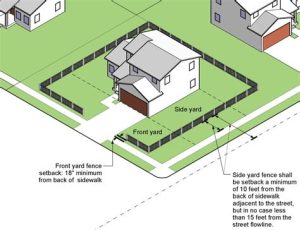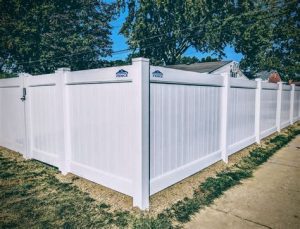Learn about temporary fencing regulations, permit requirements, application processes, and potential consequences of unauthorized fencing in your area.When planning to put up a temporary fence, whether for a special event, construction project, or to secure a specific area, understanding the legal requirements surrounding such installations is crucial. Navigating local regulations can be tricky, as permit requirements often vary significantly depending on your location and the specific nature of the fencing. This blog post will guide you through the ins and outs of temporary fencing regulations, helping you determine if you need a permit and how to obtain one if necessary. We’ll outline the steps involved in the permitting process, the potential costs and timelines you’ll encounter, and the consequences of ignoring these requirements. By the end, you’ll be equipped with all the knowledge needed to ensure your temporary fencing project complies with local laws, allowing you to focus on what truly matters.
Understanding Temporary Fencing Regulations
Temporary fencing regulations vary widely depending on your location and the intended use of the fence. Before you decide to erect a temporary fence, it’s crucial to understand the local laws and regulations that may apply. These rules can guide not only what type of fencing is permitted but also the duration it can be left up and where it can be located.
In many municipalities, a temporary fence is often defined as a barrier that remains in place for a limited time, typically related to construction projects, events, or environmental protection. Therefore, it’s essential to check with your local zoning board or council to determine if you need a permit. Regulations often encompass specific aspects such as the height, material, and design of the fence.
- Purpose of the fence: Is it for construction, crowd control, or safety?
- Location: Is it on private property or a public space?
- Duration: How long do you intend to keep the fence up?
Always prioritize reaching out to your local authorities to avoid any fines or complications that may arise from non-compliance. By doing so, you can ensure your project proceeds smoothly and legally, without unexpected interruptions.
Determining Permit Requirements for Your Location
When considering the installation of a temporary fence, one of the most crucial steps is determining permit requirements in your specific location. Various jurisdictions have different laws and regulations governing temporary structures, and understanding these is essential to ensure compliance and avoid penalties.
To begin with, it’s important to check with your local government or municipal office. Many areas have specific zoning laws that dictate where and how temporary fences can be erected. Additionally, some places may require a permit for any temporary fence, while others may have exemptions for certain types or sizes of fences.
- Check Local Ordinances: Research if your local ordinances specify any requirements for temporary fences.
- Consult Local Building Department: They can confirm whether a permit is needed and provide helpful guidelines.
- Review HOA Rules: If your property is in a homeowner’s association area, they may have additional restrictions.
It’s also beneficial to understand the timeline for obtaining permits, if necessary. Some places may process applications quickly, while others might take longer.
Process of Obtaining a Temporary Fence Permit
When it comes to installing a temporary fence, understanding the process of obtaining a permit is crucial. Whether you’re managing a construction site, hosting an event, or securing a property, having the appropriate permits ensures compliance with local laws and regulations.
The first step in the permit application process is to check the specific regulations and requirements for your area. Most municipalities require you to fill out an application form that clearly outlines the purpose of the temporary fence, its location, and the estimated duration of use. You may need to provide additional documentation, such as site plans or safety measures that will be taken during the installation.
After submitting your application, it typically goes through a review process where zoning and building departments assess it to ensure it meets all safety and zoning regulations. This process can take anywhere from a few days to several weeks, depending on your location and the complexity of your application. Therefore, it’s advisable to apply well in advance of when you plan to erect the temporary fence.
Costs and Timelines for Permit Applications
When it comes to obtaining a permit for a temporary fence, understanding the costs and timelines associated with the application process is crucial. The fees can vary widely based on your location, the type of fence you are installing, and specific regulations in your area.
On average, permit costs for temporary fencing can range from $50 to several hundred dollars. It’s important to check with your local permitting office for the exact fees. You may also encounter additional costs, such as inspection fees, if required. Some locations might even have different fees based on whether it’s a commercial or residential project.
Typically, the timeline for obtaining a temporary fence permit can take anywhere from a few days to several weeks. This duration depends on how busy the permitting office is and whether your application is complete and meets all the requirements. To expedite the process, ensure that you provide all necessary documentation and information on your application.
Consequences of Erecting a Temporary Fence Without a Permit
Constructing a temporary fence without obtaining the necessary permits can lead to serious consequences for property owners. First and foremost, local municipalities often have strict regulations regarding the erection of such structures to ensure public safety and compliance with zoning laws.
- Fines and Penalties: Many jurisdictions impose hefty fines on property owners who fail to secure the appropriate permits before erecting a temporary fence. These fines can vary significantly based on the location and the extent of the violation.
- Cease and Desist Orders: Authorities may issue a cease and desist order, requiring the property owner to take down the unauthorized fence immediately. This can lead to additional costs associated with dismantling and removing the fence.
- Legal Liability: Erecting a temporary fence without a permit can expose property owners to potential legal issues, especially if the fence causes injury or property damage to neighboring properties or passersby.
In addition to the financial implications, not obtaining a permit can hinder future projects. Local governments often keep records of violations, which can affect your ability to secure permits for future construction or renovations. Moreover, if any damage or injury occurs due to the unpermitted fence, it can complicate insurance claims or result in increased liability.
In conclusion, while the appeal of quickly putting up a temporary fence might be tempting, the consequences of ignoring permit requirements can be both costly and complicated.
Frequently Asked Questions
What is a temporary fence?
A temporary fence is a modular fencing system used for a short duration, often for events, construction sites, or security purposes.
Why might someone need a temporary fence?
Temporary fences are commonly used to secure construction sites, protect the public during events, or delineate property boundaries.
Do all locations require a permit for temporary fences?
Permitting requirements for temporary fences vary by location, so it’s essential to check local regulations before installation.
What factors influence the need for a permit for temporary fences?
Factors that influence the need for a permit include the fence’s height, purpose, location, and proximity to public pathways or roads.
How can I find out if I need a permit for a temporary fence in my area?
You can contact your local zoning office or review municipal codes online to determine the permit requirements for temporary fences.
What are the consequences of installing a temporary fence without a permit?
Installing a temporary fence without the necessary permits can result in fines, removal of the fence, and possible legal action.
Can I apply for a permit for a temporary fence online?
Many municipalities offer online applications for permits, but the process can vary, so check your local government website for specifics.





